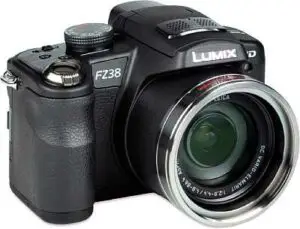Sony A7 vs A7R Differences
Sony A7 vs A7R – Sony introduces Alpha 7 and Alpha 7R with 35mm format: The 35mm format becomes mirrorless

The new Sony Alpha 7 makes the dream of an especially compact, mirrorless system camera with a 35mm sensor come true. [Photo: Sony]

The 36 x 24 mm small image sensor of the Sony Alpha 7 resolves 24 megapixels and integrates a hybrid autofocus consisting of phase and contrast detection. [Photo: Sony]

The Sony Alpha 7 not only has a 7.5 centimeter folding screen, but also a high-resolution electronic viewfinder. [Photo: Sony]

The Sony Alpha 7R even has a resolution of 36 megapixels and comes without a low-pass filter. [Photo: Sony]

The Sony Alpha 7R’s splash-proof case is made entirely of magnesium, whereas the A7’s case is partially covered with plastic. [Photo: Sony]
Sony probably wants to convey more professionalism with the “Alpha”, which has been known for a long time, or is relying on users being able to do more with this name than with “NEX”. In any case, buyers of lenses now have to pay attention not only to the right bayonet, but also to the image circle. At least the lenses can be easily distinguished by their abbreviation: SEL stands for E-Mount lenses, SAL for those with alpha bayonet, which Sony once took over from Minolta. The SAL lenses can also be adapted to cameras with e-mount by means of adapters, which does not work vice versa. Until now, only APS-C lenses were available for the E bayonet, but Sony is also announcing suitable 35 mm format lenses for the new Alpha 7 and Alpha 7R 35 mm cameras. We will introduce the five lenses in a separate announcement shortly, they all carry a “FE” in their long names. Probably this is the sign for 35mm format, which Sony consistently refers to as full format. This has become common practice, but it is not completely correct, as the full format is actually much bigger and means the 35mm format.
The CMOS sensors of the Alpha 7 and Alpha 7R measure 36 by 24 millimetres and thus offer twice as much light-sensitive surface area as the APS-C sensors of previous mirrorless system cameras. This reduces noise, improves color reproduction and dynamics of the captured photos. While the image sensor of the Alpha 7 has a resolution of 24 megapixels, the Alpha 7R has an impressive 36 megapixels, and Sony does without the low-pass filter in the “R”, which should further increase the image sharpness. With the newly developed sensor of the Alpha 7R, Sony has been able to reduce the “dead” area between the pixels, so almost the entire surface is now supposed to be light-sensitive, which naturally results in better image quality.
Only the Alpha 7 uses a new, particularly fast autofocus system. 117 phase detection sensors integrated on the sensor are to roughly determine the sharpness, the contrast autofocus with its 25 measuring points then ensures exact focusing. Sony calls this system “Hybrid Fast Intelligent AF” and also throws “Spatial Object Detection” after it – an algorithm that is supposed to process the detected data particularly quickly. According to Sony, the autofocus is thus one of the fastest variants among all full format cameras (i.e. those with a 35mm sensor). The Alpha 7R, on the other hand, only uses a contrast autofocus with 25 measuring points. The high speed is made possible above all by the new Bionz X processor, which is said to be three times faster than its predecessor model. But the autofocus can come up with even more goodies. In this way, the seven Alphas recognise eyes and can focus directly on them in portraits. Especially in 35mm format this is a valuable aid, because with fast lenses the depth of field is so shallow that with focused eyebrows or eyelashes the eyes can already be slightly out of focus. The eye recognition even works when the face is partially covered or turned away from the camera. Another useful function is spot autofocus, whose focus area size can be adjusted in three steps, especially useful for macro photography. What the autofocus also masters: Object tracking, even if it leaves the field of view for a short time.
The housings of the Alpha 7 and 7R are not only particularly compact, but also very robust. They consist of magnesium and are protected against splash water. Sony emphasizes that the case of the Alpha 7R is completely made of magnesium, whereas a small part of the Alpha 7’s front is covered with plastic. The rear screen of both models measures 7.5 centimetres diagonally, and the screen can also be folded up and down. The electronic viewfinder has around 2.4 million pixels, which corresponds to an XGA resolution of 1,024 x 768 pixels. An even higher resolution can be output via HDMI, as even 4k resolution or Ultra-HD with 3,840 x 2,160 pixels is supported here. In addition, both Alphas have WLAN and NFC, making them particularly easy to connect to smartphones for transferring images or for remote control.
Videos record the Alpha 7 and 7R in full HD resolution and with stereo sound. The audio level can be adjusted manually if desired. It is also possible to output the video signal uncompressed via the HDMI interface for external recording. The mode dial, the two control dials, the exposure-compensation dial, and seven freely assignable buttons should ensure good operation.
The two new mirrorless system cameras should be available from mid-November 2013. The Alpha 7 then costs just under EUR 1,500, a low price for a full-format camera. In the set with the 28-70 mm 3.5-5.6 kit lens the price is 1,800 EUR. The Alpha 7R on the other hand is said to cost 2,100 EUR without lens.


